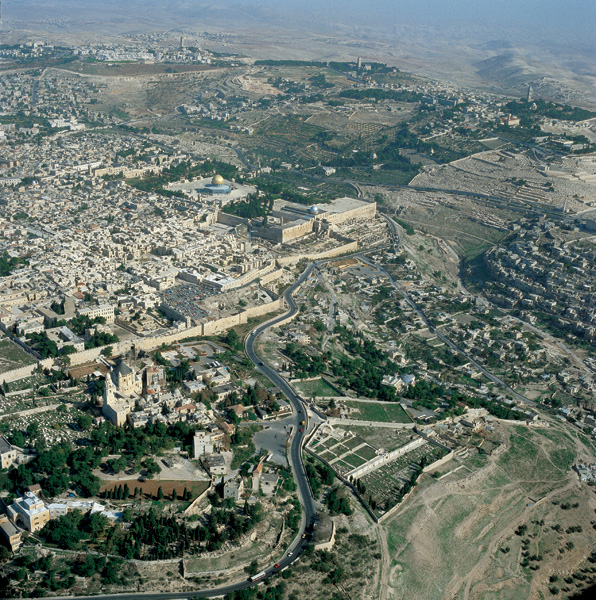Image Details

Werner Braun
>PRECEDING PAGES: –>The most ancient parts of Jerusalem appear outside and south of the Old City wall, near the center of this aerial view. Sloping down from the eastern part of the southern wall (just below the silver-domed Al-Aqsa mosque) to lower right is the ridge known as the City of David, marked by roads on each side. This ridge is the original city of Jerusalem and was defended by a wall built in about 1800 B.C.E. The imposing Church of the Dormition (lower left) dominates the area today called Mt. Zion, with a highway curling around it. Jerusalem expanded to this spacious southwestern hill during the reign of Hezekiah (eighth century B.C.E.). But what happened to the city after Cyrus the Great of Persia defeated the Babylonians in 539 B.C.E. and allowed the Judahite exiles to return from captivity? Many scholars have assumed that because of the small number of returning exiles Jerusalem contracted to the southeastern ridge, an assumption challenged in the accompanying article by Tel Aviv University archaeologist David Ussishkin.
